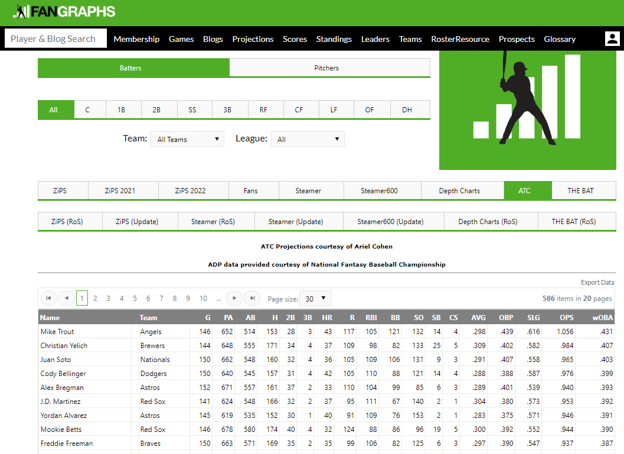Steamer vs NFBC 2020 – RBI Bargains
Over this off-season, I have uncovered potential undervalued players by comparing the Steamer projections to the current NFBC ADP. So far I have gone through undervalued speedsters, power bats and outstanding batting average players. The exercise now continues for runs batted in.
In 2019, there were 57 players with least 85 RBI. There were 28 players who exceeded the 95 RBI mark, and 17 with at least 105. Anthony Rendon of the Nationals led all of baseball with 126 runs batted in. Jose Abreu led the American league with 123. Following them were NL East first basemen Freddie Freeman (121) and Rookie of the Year Pete Alonso (120).
As we have seen in batting average, prospective projections are more conservative. Steamer projects J.D. Martinez to lead baseball in the RBI category with only 119. Only six players are projected to knock in more than 110 runs.
For this year’s analysis, I will focus on all players with a Steamer projection of at least 85 RBI. This should give us a group of players who can greatly help your team’s RBI totals in the upcoming fantasy season.
For today’s draft value comparisons, I look at:
- The player ranks as computed by the FanGraphs Auction Calculator with Steamer projections (standard NFBC 15 team roto league settings).
- The current NFBC ADP (of all non-auction leagues from January 27, 2020 to present). 48 leagues in total were observed.

